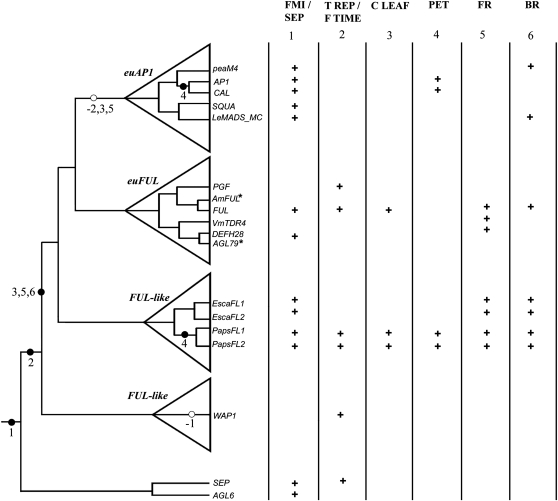Figure 8.
Optimization and mapping of functions recorded for AP1/FUL homologs. Based on the available data, we hypothesize that the ancestral functions in the AP1/FUL gene lineage include floral meristem and sepal identity (1), because these are functions that are shared with the sister SEPALLATA and AGL6 gene lineages. Transition to the reproductive meristem (2) appears to be ancestral just to the AP1/FUL lineage. Before the diversification of the Papaveraceae, the genes acquired functions in cauline leaf development (3), branching (6), and fruit development (5), although the acquisition of these functions could have happened earlier than is shown here. After the diversification of the core eudicots, some of these functions (1 and 6) were retained by both the euFUL and the euAP1 clades, whereas others (2, 3, and 5) were exclusively retained by members of the euFUL clade. A role in petal identity (4) appears to have been independently acquired in opium poppy and Arabidopsis. Asterisks indicate that no functional data are available. FMI/SEP, Floral meristem identity and sepal identity; T REP/F TIME, transition to reproductive meristems/flowering time; C LEAF, cauline leaf development; PET, petal identity; FR, fruit development; BR, branching. Black circles indicate gain of function (also numbered on the right), and white circles indicate loss of function. + symbolizes that the function has been recorded for that gene.

